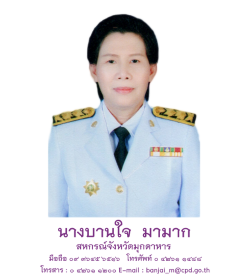×
ยินดีต้อนรับสู่ ฟอรัม Kunena!
อยากรู้จังเลยว่าคุณชอบอะไร รู้จักกับที่นี่ได้อย่างไร และสาเหตุจูงใจอะไรจึงลงทะเบียนเป็นสมาชิกกับทางเรา ช่วยแจ้งให้เราได้ทราบหน่อยได้ไหม
ยินดีต้อนรับสมาชิกใหม่ทุกท่าน และหวังว่าทางเราจะได้รับใช้คุณเยี่ยงนี้ตลอดไป
อยากรู้จังเลยว่าคุณชอบอะไร รู้จักกับที่นี่ได้อย่างไร และสาเหตุจูงใจอะไรจึงลงทะเบียนเป็นสมาชิกกับทางเรา ช่วยแจ้งให้เราได้ทราบหน่อยได้ไหม
ยินดีต้อนรับสมาชิกใหม่ทุกท่าน และหวังว่าทางเราจะได้รับใช้คุณเยี่ยงนี้ตลอดไป
kra25 cc
- Davidladdy
- Topic Author
- Visitor
-

2 months 2 weeks ago #2637727
by Davidladdy
Replied by Davidladdy on topic kraken даркнет
Where did Yemeni coffee shops come from?
<a href=https://kraken2trfqodidvlh4aa337cpzfrhdlfldhve5nf7njhumwr7insta.cc>kraken тор
In the Middle East, coffee isn’t a grab-and-go drink used to wake up with, but a social exchange. While coffee beans originated in Ethiopia, the earliest evidence of cultivation appeared in Yemen through trading across the Red Sea.
kraken2trfqodidvlh4aa337cpzfrhdlfldhve5nf7njhumwr7insta.cc
kra15 at
The practice followed into the early 20th century and across the world, when the first wave of Middle Eastern immigrants came to Detroit to work in the auto industry or shipping yards, Howell said. Most immigrants were men who migrated alone, so one of the first institutions they created were coffee houses where they would gather to socialize, share news about their home country, and even write letters back home. Many of the initial mosques in the area were originally established in the backs of the coffee houses.
Yemeni men working in shipping on the Great Lakes “would work for months at a time and then have a few weeks off and then work again,” leaving them unable to visit their families back in Yemen, Howell said. “The coffee houses in the Detroit area were a really important institution.”
“Our mission is to bring everyone in one place and share history,” Ibrahim Alhasbani, founder of the first contemporary Yemeni coffee chain Qahwah House, told CNN. “That’s why we serve the coffee in a pot. People come inside the store and they share one pot and they can talk and they share different stories.”
A new chapter for Yemeni coffee
Contemporary chains are designed by a new demographic — the descendants of these immigrants who are bringing Yemeni coffee culture to the American mainstream.
The very first Qahwah Houses in Dearborn were airy and upscale, a familiar setting to patrons of established coffee chains. But they also brought with them Yemeni culture, with coffee beans imported from local farmers, artifacts from the region and the founder’s family tree on the wall.
<a href=https://kraken2trfqodidvlh4aa337cpzfrhdlfldhve5nf7njhumwr7insta.cc>kraken тор
In the Middle East, coffee isn’t a grab-and-go drink used to wake up with, but a social exchange. While coffee beans originated in Ethiopia, the earliest evidence of cultivation appeared in Yemen through trading across the Red Sea.
kraken2trfqodidvlh4aa337cpzfrhdlfldhve5nf7njhumwr7insta.cc
kra15 at
The practice followed into the early 20th century and across the world, when the first wave of Middle Eastern immigrants came to Detroit to work in the auto industry or shipping yards, Howell said. Most immigrants were men who migrated alone, so one of the first institutions they created were coffee houses where they would gather to socialize, share news about their home country, and even write letters back home. Many of the initial mosques in the area were originally established in the backs of the coffee houses.
Yemeni men working in shipping on the Great Lakes “would work for months at a time and then have a few weeks off and then work again,” leaving them unable to visit their families back in Yemen, Howell said. “The coffee houses in the Detroit area were a really important institution.”
“Our mission is to bring everyone in one place and share history,” Ibrahim Alhasbani, founder of the first contemporary Yemeni coffee chain Qahwah House, told CNN. “That’s why we serve the coffee in a pot. People come inside the store and they share one pot and they can talk and they share different stories.”
A new chapter for Yemeni coffee
Contemporary chains are designed by a new demographic — the descendants of these immigrants who are bringing Yemeni coffee culture to the American mainstream.
The very first Qahwah Houses in Dearborn were airy and upscale, a familiar setting to patrons of established coffee chains. But they also brought with them Yemeni culture, with coffee beans imported from local farmers, artifacts from the region and the founder’s family tree on the wall.
Reply to Davidladdy
- JamesHen
- Topic Author
- Visitor
-

2 months 2 weeks ago #2637728
by JamesHen
Replied by JamesHen on topic кракен вход
What the rising popularity of Yemeni coffee shops says about third places
<a href=https://kr13at.cc>kraken2trfqodidvlh4aa337cpzfrhdlfldhve5nf7njhumwr7instad onion
The most popular spot on a late Friday night in a pocket of Manhattan’s West Village isn’t a trendy bar or a Michelin-starred restaurant but a Yemeni coffee house chain strictly serving coffee, tea and pastries.
A step into Qahwah House on Carmine Street offers a rich whiff of cardamom, Arabic music and crowds of people both at tables and in line to order. The energy spills over into the sidewalk, where some begin performing a Levantine folk dance known as dabke. It’s a snapshot of various Eastern cultures; Arabic, Farsi and Urdu fill the air, and some customers don traditional attire.
kr13at.cc
kraken войти
Qahwah House is just one of a string of Yemeni coffee chains that originated in the Arab-populated Detroit area and are rapidly springing up across the country, often where there are significant Middle Eastern and Muslim populations. Nineteen Qahwah House locations are open across seven states, with more under construction and expected to open this year. Another chain, Haraz, opened this month in the pricey SoHo neighborhood in Manhattan, with at least six more in the region planned in the next two years. Times Square will be home to two other chains, MOKAFE and Qamaria Yemeni Coffee Co.
The rapid expansion of these shops underscores the demand for late-night social spots for not only young Muslims and Middle Easterners, but also younger people who are looking for a non-digital third space where they can hang out without alcohol or having to yell over loud music.
They don’t have many other options. Malls, a traditional third place for young people, are growing more and more unpopular. Chains like Starbucks have become more like take-out counters. Alcohol-free lifestyles are growing even for those outside of the Muslim faith, which many practicing the religion already take part in.
So for many young people in urban areas, especially those from immigrant communities looking for a way to connect to their cultures, it’s a great option.
<a href=https://kr13at.cc>kraken2trfqodidvlh4aa337cpzfrhdlfldhve5nf7njhumwr7instad onion
The most popular spot on a late Friday night in a pocket of Manhattan’s West Village isn’t a trendy bar or a Michelin-starred restaurant but a Yemeni coffee house chain strictly serving coffee, tea and pastries.
A step into Qahwah House on Carmine Street offers a rich whiff of cardamom, Arabic music and crowds of people both at tables and in line to order. The energy spills over into the sidewalk, where some begin performing a Levantine folk dance known as dabke. It’s a snapshot of various Eastern cultures; Arabic, Farsi and Urdu fill the air, and some customers don traditional attire.
kr13at.cc
kraken войти
Qahwah House is just one of a string of Yemeni coffee chains that originated in the Arab-populated Detroit area and are rapidly springing up across the country, often where there are significant Middle Eastern and Muslim populations. Nineteen Qahwah House locations are open across seven states, with more under construction and expected to open this year. Another chain, Haraz, opened this month in the pricey SoHo neighborhood in Manhattan, with at least six more in the region planned in the next two years. Times Square will be home to two other chains, MOKAFE and Qamaria Yemeni Coffee Co.
The rapid expansion of these shops underscores the demand for late-night social spots for not only young Muslims and Middle Easterners, but also younger people who are looking for a non-digital third space where they can hang out without alcohol or having to yell over loud music.
They don’t have many other options. Malls, a traditional third place for young people, are growing more and more unpopular. Chains like Starbucks have become more like take-out counters. Alcohol-free lifestyles are growing even for those outside of the Muslim faith, which many practicing the religion already take part in.
So for many young people in urban areas, especially those from immigrant communities looking for a way to connect to their cultures, it’s a great option.
Reply to JamesHen
- NormanGratt
- Topic Author
- Visitor
-

2 months 2 weeks ago #2637757
by NormanGratt
Replied by NormanGratt on topic kraken darknet onion
A ring found among the debris of Florida’s recent hurricanes awaits its owner
<a href=https://kra012.cc>kraken войти
Scattered across Florida’s hurricane-ravaged communities are piles of debris, remnants of what were once homes. Cherished memories — photo albums, family heirlooms, and tokens of love — swallowed by floodwaters and carried miles away, are now reduced to mere fragments and discarded amid the wreckage.
But in one of these piles of lost memories, a small, inconspicuous velvet black box was discovered with a ring and a note that read: “I was 18 when my parents gave it to me.”
kra012.cc
kraken shop
Now, Joe Kovach, the engineer managing one of the debris sites in Tarpon Springs, Florida, where the box was found, is searching for its owner.
“Everyone has been basically dumping their entire lives onto the curb after the storm when everything flooded. My own boss’ house had 30 inches (of water) in it, and I saw his face and just how devastating it can be for everyone,” Kovach, an engineer with Pinellas County Public Works, told CNN.
“A lot of people in the community were really affected by these two storms, if there’s just a little bit I can do to give back, then that’s perfect.”
A contractor, who was gathering and condensing debris with an excavator, discovered the ring when he looked down and saw the box.
“This was a needle in a haystack for sure. For something like that to survive all that when everything else was so wet and saturated, that was kind of incredible,” Kovach said.
Although the ring was found after Hurricane Milton, Kovach is sure the treasure was initially lost amid the ruins of Hurricane Helene, based on the pile of debris it came from, which Pinellas County Public Works tracks. It is likely the owner of the ring is from Crystal Beach, Ozona, or Palm Harbor, Kovach said.
On Tuesday, after the contractor informed him about the ring, Kovach posted a photo of the box and the note on several local community Facebook pages, asking if it belonged to anyone. He did not include a photo or description of the ring to ensure it is returned to the rightful owner who can accurately describe it. On the inside lid of the box is a gold engraving with the jewelry brand, “The Danbury Mint.”
<a href=https://kra012.cc>kraken войти
Scattered across Florida’s hurricane-ravaged communities are piles of debris, remnants of what were once homes. Cherished memories — photo albums, family heirlooms, and tokens of love — swallowed by floodwaters and carried miles away, are now reduced to mere fragments and discarded amid the wreckage.
But in one of these piles of lost memories, a small, inconspicuous velvet black box was discovered with a ring and a note that read: “I was 18 when my parents gave it to me.”
kra012.cc
kraken shop
Now, Joe Kovach, the engineer managing one of the debris sites in Tarpon Springs, Florida, where the box was found, is searching for its owner.
“Everyone has been basically dumping their entire lives onto the curb after the storm when everything flooded. My own boss’ house had 30 inches (of water) in it, and I saw his face and just how devastating it can be for everyone,” Kovach, an engineer with Pinellas County Public Works, told CNN.
“A lot of people in the community were really affected by these two storms, if there’s just a little bit I can do to give back, then that’s perfect.”
A contractor, who was gathering and condensing debris with an excavator, discovered the ring when he looked down and saw the box.
“This was a needle in a haystack for sure. For something like that to survive all that when everything else was so wet and saturated, that was kind of incredible,” Kovach said.
Although the ring was found after Hurricane Milton, Kovach is sure the treasure was initially lost amid the ruins of Hurricane Helene, based on the pile of debris it came from, which Pinellas County Public Works tracks. It is likely the owner of the ring is from Crystal Beach, Ozona, or Palm Harbor, Kovach said.
On Tuesday, after the contractor informed him about the ring, Kovach posted a photo of the box and the note on several local community Facebook pages, asking if it belonged to anyone. He did not include a photo or description of the ring to ensure it is returned to the rightful owner who can accurately describe it. On the inside lid of the box is a gold engraving with the jewelry brand, “The Danbury Mint.”
Reply to NormanGratt
- JamesKelry
- Topic Author
- Visitor
-

2 months 2 weeks ago #2637790
by JamesKelry
Replied by JamesKelry on topic Кракен тор
What the rising popularity of Yemeni coffee shops says about third places
<a href=https://kr13at.cc>kraken официальный сайт
The most popular spot on a late Friday night in a pocket of Manhattan’s West Village isn’t a trendy bar or a Michelin-starred restaurant but a Yemeni coffee house chain strictly serving coffee, tea and pastries.
A step into Qahwah House on Carmine Street offers a rich whiff of cardamom, Arabic music and crowds of people both at tables and in line to order. The energy spills over into the sidewalk, where some begin performing a Levantine folk dance known as dabke. It’s a snapshot of various Eastern cultures; Arabic, Farsi and Urdu fill the air, and some customers don traditional attire.
kr13at.cc
kraken shop
Qahwah House is just one of a string of Yemeni coffee chains that originated in the Arab-populated Detroit area and are rapidly springing up across the country, often where there are significant Middle Eastern and Muslim populations. Nineteen Qahwah House locations are open across seven states, with more under construction and expected to open this year. Another chain, Haraz, opened this month in the pricey SoHo neighborhood in Manhattan, with at least six more in the region planned in the next two years. Times Square will be home to two other chains, MOKAFE and Qamaria Yemeni Coffee Co.
The rapid expansion of these shops underscores the demand for late-night social spots for not only young Muslims and Middle Easterners, but also younger people who are looking for a non-digital third space where they can hang out without alcohol or having to yell over loud music.
They don’t have many other options. Malls, a traditional third place for young people, are growing more and more unpopular. Chains like Starbucks have become more like take-out counters. Alcohol-free lifestyles are growing even for those outside of the Muslim faith, which many practicing the religion already take part in.
So for many young people in urban areas, especially those from immigrant communities looking for a way to connect to their cultures, it’s a great option.
<a href=https://kr13at.cc>kraken официальный сайт
The most popular spot on a late Friday night in a pocket of Manhattan’s West Village isn’t a trendy bar or a Michelin-starred restaurant but a Yemeni coffee house chain strictly serving coffee, tea and pastries.
A step into Qahwah House on Carmine Street offers a rich whiff of cardamom, Arabic music and crowds of people both at tables and in line to order. The energy spills over into the sidewalk, where some begin performing a Levantine folk dance known as dabke. It’s a snapshot of various Eastern cultures; Arabic, Farsi and Urdu fill the air, and some customers don traditional attire.
kr13at.cc
kraken shop
Qahwah House is just one of a string of Yemeni coffee chains that originated in the Arab-populated Detroit area and are rapidly springing up across the country, often where there are significant Middle Eastern and Muslim populations. Nineteen Qahwah House locations are open across seven states, with more under construction and expected to open this year. Another chain, Haraz, opened this month in the pricey SoHo neighborhood in Manhattan, with at least six more in the region planned in the next two years. Times Square will be home to two other chains, MOKAFE and Qamaria Yemeni Coffee Co.
The rapid expansion of these shops underscores the demand for late-night social spots for not only young Muslims and Middle Easterners, but also younger people who are looking for a non-digital third space where they can hang out without alcohol or having to yell over loud music.
They don’t have many other options. Malls, a traditional third place for young people, are growing more and more unpopular. Chains like Starbucks have become more like take-out counters. Alcohol-free lifestyles are growing even for those outside of the Muslim faith, which many practicing the religion already take part in.
So for many young people in urban areas, especially those from immigrant communities looking for a way to connect to their cultures, it’s a great option.
Reply to JamesKelry
- WilliamCah
- Topic Author
- Visitor
-

2 months 2 weeks ago #2637820
by WilliamCah
Replied by WilliamCah on topic kraken darknet
What the rising popularity of Yemeni coffee shops says about third places
<a href=https://kr13at.cc>kraken сайт
The most popular spot on a late Friday night in a pocket of Manhattan’s West Village isn’t a trendy bar or a Michelin-starred restaurant but a Yemeni coffee house chain strictly serving coffee, tea and pastries.
A step into Qahwah House on Carmine Street offers a rich whiff of cardamom, Arabic music and crowds of people both at tables and in line to order. The energy spills over into the sidewalk, where some begin performing a Levantine folk dance known as dabke. It’s a snapshot of various Eastern cultures; Arabic, Farsi and Urdu fill the air, and some customers don traditional attire.
kr13at.cc
kraken
Qahwah House is just one of a string of Yemeni coffee chains that originated in the Arab-populated Detroit area and are rapidly springing up across the country, often where there are significant Middle Eastern and Muslim populations. Nineteen Qahwah House locations are open across seven states, with more under construction and expected to open this year. Another chain, Haraz, opened this month in the pricey SoHo neighborhood in Manhattan, with at least six more in the region planned in the next two years. Times Square will be home to two other chains, MOKAFE and Qamaria Yemeni Coffee Co.
The rapid expansion of these shops underscores the demand for late-night social spots for not only young Muslims and Middle Easterners, but also younger people who are looking for a non-digital third space where they can hang out without alcohol or having to yell over loud music.
They don’t have many other options. Malls, a traditional third place for young people, are growing more and more unpopular. Chains like Starbucks have become more like take-out counters. Alcohol-free lifestyles are growing even for those outside of the Muslim faith, which many practicing the religion already take part in.
So for many young people in urban areas, especially those from immigrant communities looking for a way to connect to their cultures, it’s a great option.
<a href=https://kr13at.cc>kraken сайт
The most popular spot on a late Friday night in a pocket of Manhattan’s West Village isn’t a trendy bar or a Michelin-starred restaurant but a Yemeni coffee house chain strictly serving coffee, tea and pastries.
A step into Qahwah House on Carmine Street offers a rich whiff of cardamom, Arabic music and crowds of people both at tables and in line to order. The energy spills over into the sidewalk, where some begin performing a Levantine folk dance known as dabke. It’s a snapshot of various Eastern cultures; Arabic, Farsi and Urdu fill the air, and some customers don traditional attire.
kr13at.cc
kraken
Qahwah House is just one of a string of Yemeni coffee chains that originated in the Arab-populated Detroit area and are rapidly springing up across the country, often where there are significant Middle Eastern and Muslim populations. Nineteen Qahwah House locations are open across seven states, with more under construction and expected to open this year. Another chain, Haraz, opened this month in the pricey SoHo neighborhood in Manhattan, with at least six more in the region planned in the next two years. Times Square will be home to two other chains, MOKAFE and Qamaria Yemeni Coffee Co.
The rapid expansion of these shops underscores the demand for late-night social spots for not only young Muslims and Middle Easterners, but also younger people who are looking for a non-digital third space where they can hang out without alcohol or having to yell over loud music.
They don’t have many other options. Malls, a traditional third place for young people, are growing more and more unpopular. Chains like Starbucks have become more like take-out counters. Alcohol-free lifestyles are growing even for those outside of the Muslim faith, which many practicing the religion already take part in.
So for many young people in urban areas, especially those from immigrant communities looking for a way to connect to their cultures, it’s a great option.
Reply to WilliamCah
- IsrealSeere
- Topic Author
- Visitor
-

2 months 2 weeks ago #2637828
by IsrealSeere
Replied by IsrealSeere on topic kraken shop
Groundbreaking telescope reveals first piece of new cosmic map
<a href=https://kr13at.cc>kra at
Greetings, earthlings! I’m Jackie Wattles, and I’m thrilled to be a new name bringing awe to your inbox.
I’ve covered space exploration for nearly a decade at CNN, and there has never been a more exciting time to follow space and science discoveries. As researchers push forward to explore and understand the cosmos, advancements in technology are sparking rapid developments in rocketry, astronomical observatories and a multitude of scientific instruments.
kr13at.cc
kraken ссылка
Look no further than the missions racing to unlock dark matter and the mysterious force known as dark energy, both so named precisely because science has yet to explain these phenomena.
Astronomers have never detected dark matter, but they believe it makes up about 85% of the total matter in the universe. Meanwhile, the existence of dark energy helps researchers explain why the universe is expanding — and why that expansion is speeding up.
Extraordinary new scientific instruments are churning out trailblazing data, ready to reshape how scientists view the cosmos.
A prime example is the European Space Agency’s wide-angle Euclid telescope that launched in 2023 to investigate the riddles of dark energy and dark matter.
Euclid this week delivered the first piece of a cosmic map — containing about 100 million stars and galaxies — that will take six years to create.
These stunning 3D observations may help scientists see how dark matter warps light and curves space across galaxies.
Meanwhile, on a mountaintop in northern Chile, the US National Science Foundation and Stanford University researchers are preparing to power up the world’s largest digital camera inside the Vera C. Rubin Observatory.
Unearthed
In the mountains of Uzbekistan, a research team used lasers strapped to a flying robot to uncover two cities buried and lost for centuries.
The anthropologists said they had mapped these forgotten medieval towns for the first time — located at a key crossroad of ancient silk trade routes — using a drone equipped with LiDAR, or light detection and ranging equipment.
When nature reclaims what’s left of once thriving civilizations, scientists are increasingly turning to remote sensing to peer through dense vegetation.
The images revealed two large settlements dotted with watchtowers, fortresses, complex buildings, plazas and pathways that tens of thousands of people may have called home.
<a href=https://kr13at.cc>kra at
Greetings, earthlings! I’m Jackie Wattles, and I’m thrilled to be a new name bringing awe to your inbox.
I’ve covered space exploration for nearly a decade at CNN, and there has never been a more exciting time to follow space and science discoveries. As researchers push forward to explore and understand the cosmos, advancements in technology are sparking rapid developments in rocketry, astronomical observatories and a multitude of scientific instruments.
kr13at.cc
kraken ссылка
Look no further than the missions racing to unlock dark matter and the mysterious force known as dark energy, both so named precisely because science has yet to explain these phenomena.
Astronomers have never detected dark matter, but they believe it makes up about 85% of the total matter in the universe. Meanwhile, the existence of dark energy helps researchers explain why the universe is expanding — and why that expansion is speeding up.
Extraordinary new scientific instruments are churning out trailblazing data, ready to reshape how scientists view the cosmos.
A prime example is the European Space Agency’s wide-angle Euclid telescope that launched in 2023 to investigate the riddles of dark energy and dark matter.
Euclid this week delivered the first piece of a cosmic map — containing about 100 million stars and galaxies — that will take six years to create.
These stunning 3D observations may help scientists see how dark matter warps light and curves space across galaxies.
Meanwhile, on a mountaintop in northern Chile, the US National Science Foundation and Stanford University researchers are preparing to power up the world’s largest digital camera inside the Vera C. Rubin Observatory.
Unearthed
In the mountains of Uzbekistan, a research team used lasers strapped to a flying robot to uncover two cities buried and lost for centuries.
The anthropologists said they had mapped these forgotten medieval towns for the first time — located at a key crossroad of ancient silk trade routes — using a drone equipped with LiDAR, or light detection and ranging equipment.
When nature reclaims what’s left of once thriving civilizations, scientists are increasingly turning to remote sensing to peer through dense vegetation.
The images revealed two large settlements dotted with watchtowers, fortresses, complex buildings, plazas and pathways that tens of thousands of people may have called home.
Reply to IsrealSeere
Time to create page: 1.872 seconds












